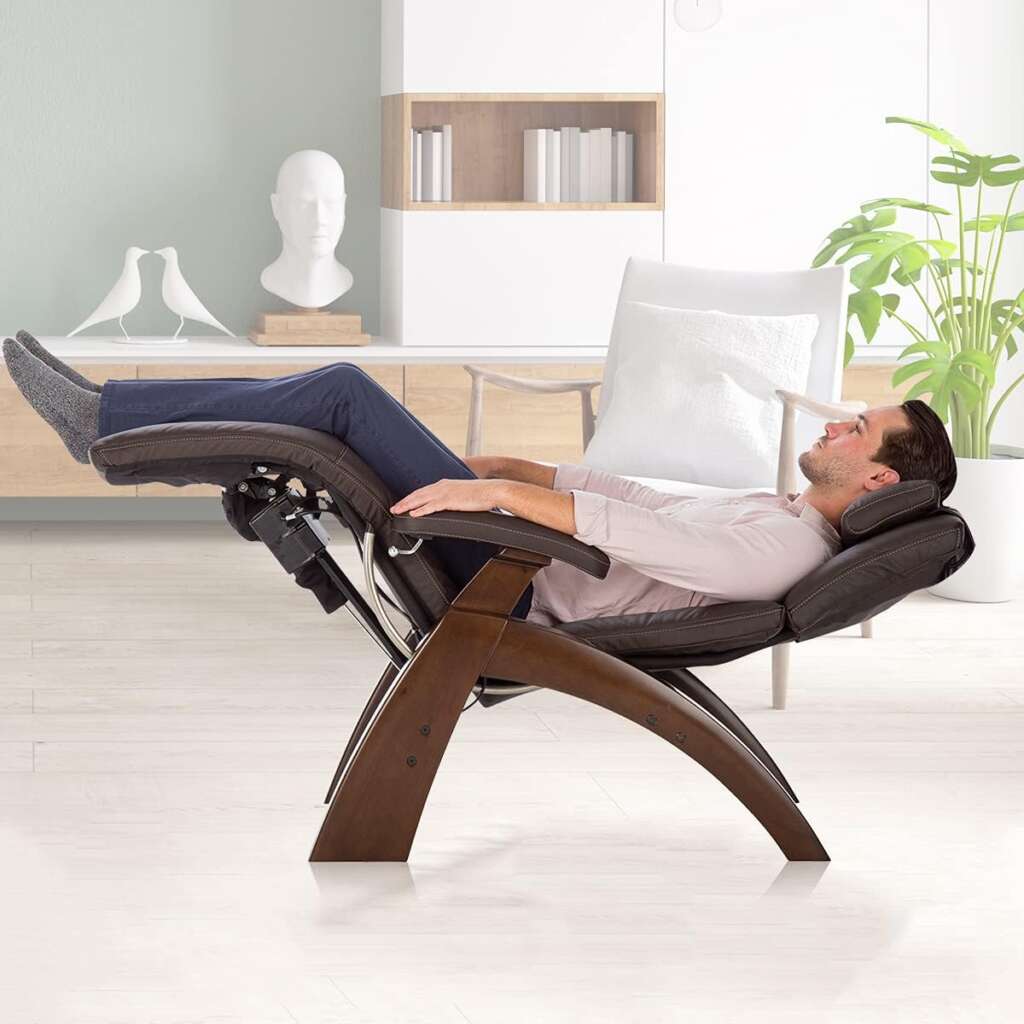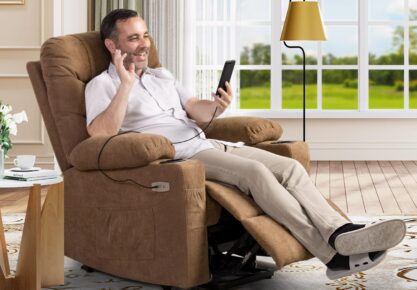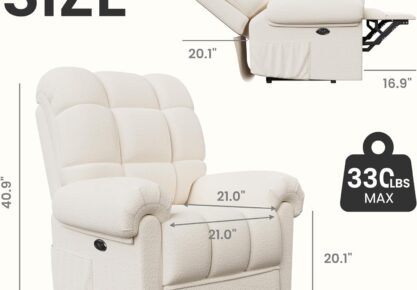
are recliners bad for your neck? A recliner chair provides a calm and comfortable environment for you to unwind after a long, tiring day. However, even while recliners are designed to provide a comfortable platform for your body and neck, they can be harmful or cause neck discomfort in some situations if used incorrectly. There are several instances in which this occurs.
While utilizing recliners to rest and unwind, you may wonder if they are unhealthy for your neck and back. What if they exacerbate rather than relieve back pain? The truth is that, while recliners have numerous advantages, they can also cause major neck and back issues owing to improper size, design, or just inadequate reclining position.
For example, sitting in a recliner chair for an extended amount of time with your head and neck inclined. Alternatively, if the chair is not correctly positioned to give enough neck support, it might induce neck pain. If you don’t use a chair appropriately or choose one with insufficient neck support, you risk experiencing neck pain or damage.
Contents
Why Recliners are Bad for Your neck
- The same mechanism of harm occurs while reclining back in a recliner while using a laptop, reading, or napping. Even after a few minutes in the same posture, your neck muscles get stressed from the unnatural position.
- So, the issue is: Are recliners hazardous for your neck? A muscle tension is formed, which is compounded by prior or persistent neck disorders that may have contributed to the discomfort. Stretch your arm straight out in front of you while holding a 2-pound weight. The muscles do not ache for long, but when they are unable to rest or change positions for an extended period of time, they start to suffer. When you push your head forward on a chair, your neck muscles stretch.
- The discomfort comes when the muscles do not receive adequate rest. The same thing happens to your neck. When you sit in your recliner chair with your head forced forward for an extended amount of time, your neck muscles become strained. Furthermore, if the chair is overly firm or soft, it may not give adequate neck support, resulting in pain.
- Another example is when a recliner chair is set excessively high or too low, which can put strain on the neck muscles. However, do not cease using the chair for this reason, since I have suggested strategies to reduce the chance of developing neck pain. You should select your chair carefully, as several are rated the finest for neck discomfort.
- There are several reclining chairs that are suitable for a specific body type and height. However, they are intended for a certain population group rather than the broader public. As a result, the head is pushed forward, causing a stiff neck. When viewed from the side, the spine’s natural curvature (also known as a military neck) progressively vanishes. Poor posture can increase problems if the spine is not healthy, therefore use the best recliner chair for neck and back pain.
How to Avoid Neck Pain While Sitting in a Recliner?

- Set your posture correctly.
Before you sit on a reclining chair, be sure your posture is correct. Bad posture might cause major health concerns in the long term. Make sure there is no gap between your neck and the chair’s lumbar support. This will help you prevent neck discomfort. - Choose Your Recliner Wisely.
To avoid neck injuries, try to pick one that is comfortable for you. Some recliners include a built-in neck cushion. However, you should not pick it without first ensuring that it provides comfort to your entire body. - Create a Bespoke Pillow.
You may create a neck cushion and use it to avoid pain that could result in a neck injury. To construct a neck cushion, use a hand towel. Roll it up and fasten it with rubber bands or tape. This is perhaps one of the simplest ways to overcome any potential injury, because you can adjust the pillow’s position to your comfort. - Determine the proper angle for your posture.
Setting the correct angle in your posture can significantly reduce the chance of pain. You may experiment with different reclining positions to find the best angle for you. Then take the angle approximation and track it over time. - Ensure that you have lumbar support.
The lumbar support of a chair is essential for neck and back pain relief. Before purchasing a reclining chair, you should verify its lumbar support. If you notice a larger gap between your neck and the lumbar support, you should avoid that chair, since poor support causes neck discomfort.
What is the ideal reclining position?
- As previously indicated, sitting in an uncomfortable position can result in pain or injury to the back and neck. To avoid neck and back stress, recline ergonomically in the ideal position.
- Proper reclining requires enough lumbar support. If your reclining chair does not give adequate lumbar support, you should examine alternatives. You may either replace your present one with an upgraded one or get an extra cushion to provide lumbar support.
- This manner, your back will bend in the proper position, putting the least strain on your spine.
- Chiropractors recommend reclining at a 135° angle for optimal rocking comfort. Reclining at an appropriate 90° angle may produce strain in your spine. So 135 degrees is the best posture for your neck and back.
- Cushioned headrests are the most comfortable option. The ideal position for the headrest is one that supports both your head and neck evenly. This way, you won’t have to raise your head to see TV or your laptop screen, which reduces the risk of neck strain.
- When sitting in a chair, keep your feet firmly on the ground for optimal ergonomics. However, if your feet are only touching the ground or hanging in the air when you recline, your chair is far larger than your body size. This position will increase strain on your back and reduce blood circulation in your legs.
how to choose best recliner for neck pain
- Maximize comfort while selecting a chair. It should have enough cushioning to keep you comfortable after sitting or resting on it for an extended period of time. If there are any sections of the chair that produce noise when someone moves about on them, then they should be replaced with better-quality material so that they won’t squeak or creak when someone sits down in them.
- Good Lumbar Support: It’s not just about back discomfort either; reclining chairs can also raise pressure on other sections of your body as well. If you use one, make sure it provides excellent lumbar support (the area below your hips) to avoid straining yourself when sitting.
- Recliners come in a variety of sizes to accommodate tiny, small, medium, and tall individuals. Some recliners are broad and heavy-duty, developed expressly for fat individuals. Choose a chair that is appropriate for your weight and height.
- Your exact demands:
If you are recovering from surgery or just wish to purchase one for an elderly family member, some requirements must be completed. For patients healing from injuries or operations, a flat-lay decrease with a reclining angle of up to 180° may be optimal. - However, for the elderly who are unable to use a manual recliner or have difficulty sitting or standing, a high-quality motorized lift recliner would be a gift.
recommended the BEST 11 RECLINER CHAIRS



